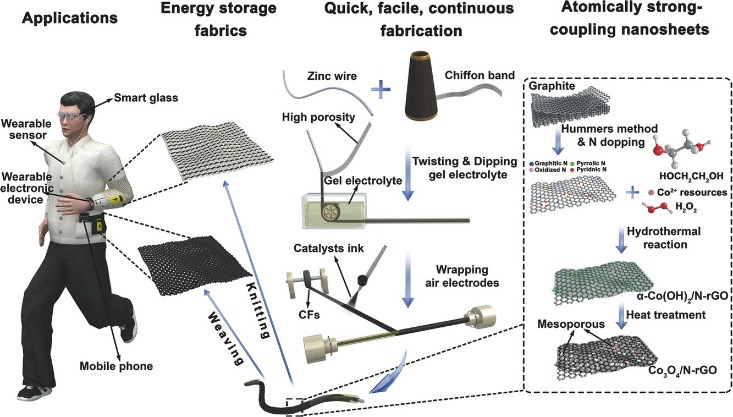Tianjin University makes new progress in zinc-air flexible energy devices
Though the demand for bendable and portable batteries is increasingly urgent, flexible lithium-ion batteries and super capacitors have problems such as insufficient energy density.
Professor Hu Wenbin of the School of Materials Science and Engineering in Tianjin University has conducted a series of studies on this respect, but the performance of zinc-air batteries is severely constrained by the oxygen reduction and oxygen evolution of the air electrode.
Thus, the team tried to improve upon the cathodic reaction kinetics of the battery.
Professor Zhong Cheng, a member of the team, published 15 high-level papers in prestigious academic journals in 2017.
 |
|
Papers published by professor Cheng in high-level academic journals. [Photo/Tianjin University] |
Combined with the subsequent heat treatment process, an integrated air electrode with a combination of ultra-thin mesoporous cobaltosic oxide and carbon cloth with high oxygen reduction and oxygen evolution capability was obtained.
 |
|
CO3O4/N-rGO Flexible Zinc-Air Battery Manufacturing Process Diagram. [Photo/Tianjin University] |
The flexible device made of an integrated air electrode with high-efficiency oxygen reduction and oxygen precipitation catalytic performance has superior overall performance. Besides, the flexible wire zinc-air battery with CO3O4/N-rGO as the catalyst has excellent charge and discharge performance.
Flexible zinc-air battery packs connected in series and in parallel can drive electronic devices and even charge iPhones.
The zinc-air battery prepared with CO3O4 nanosheets has good overall performance and has a variety of application prospects in terms of LEDs, pedometers and other wearable technologies.


















